Nano Robotics is the technology of creating machines or robots close to the microscopic scale of a nanometer (10−9 meters). Nanorobotics refers to nanotechnology
– an engineering discipline for designing and building nanorobots.
These devices range from 0.1-10 micrometers and are made up of nano
scale or molecular components. As no artificial, non-biological Nano
robots have yet been created, they remain a pretending concept. The
names nanorobots, nanoids, nanites or nanomites have also been used to
describe these hypothetical devices.
Nano robots can be used in different
application areas such as medicine and space technology. Nowadays, these
nanorobots play a crucial role in the field of Bio-Medicine,
particularly for the treatment of cancer, cerebral Aneurysm, removal of
kidney stones, elimination of defected parts in the DNA structure, and
for some other treatments that need utmost support to save human lives.
Nanorobots are nano devices used for the
purpose of maintaining and protecting the human body against pathogens.
Nanorobots are implemented by using several components such as sensors,
actuators, control, power, communication and by interfacing cross-special scales between organic inorganic systems.
The development of nanorobots is done by using various approaches such as:
Biochip
The combination of nanotechnology,
photo-lithography and new biomaterials, can be considered as a possible
way required for designing technology to develop nanorobots for medical
applications such as diagnosis and drug delivery. This realistic
approach in designing nanorobots is a methodology which is used in the
electronic industries.
Nubots
Nubot is an acronym for “nucleic acid
robots.” Nubots are manmade robotics devices at the Nanoscale.
Representative nubots includes numerous Deoxy Nucleic Acid walkers
reported by Ned Seeman’s group at NYU, Niles Pierce’s group at Caltech,
John Reif’s group at Duke University, Chengde Mao’s group at Purdue, and
Andrew Turberfield’s group at the University of Oxford.
Positional Nanoassembly
In the year 2000, Robert Frietas and
Ralph Merkle found nanofactory collaboration which is an ongoing effort
consisting of ten organizations with 23 researchers from four countries.
This collaboration aims at developing positionally controlled
mechanosynthesis and diamondoid nanofactory which is capable of
constructing a diamondoid medical nanorobot.
Usage of Bacteria
This approach makes use of biological
microorganisms, such as Escherichia coil bacteria. So this model uses a
flagellum for propulsion purpose. The use of electromagnetic fields is
to control the motion of biological integrated device and its limited
applications.
Nanorobots Applications
1. Nanorobotics in Surgery
Surgical nanorobots are introduced into
the human body through vascular systems and other cavities. Surgical
nanorobots act as semi-autonomous on-site surgeon inside the human body
and are programmed or directed by a human surgeon. This programmed
surgical nanorobot performs various functions like searching for
pathogens, and then diagnosis and correction of lesions by
nano-manipulation synchronized by an on-board computer while conserving
and contacting with the supervisory surgeon through coded ultrasound
signals.
Nowadays, the earlier forms of cellular
nano-surgery are being explored. For example, a micropipette rapidly
vibrating at a frequency of 100 Hz micropipette comparatively less than 1
micron tip diameter is used to cut dendrites from single neurons. This
process is not ought to damage the cell capability.
2. Diagnosis and Testing
Medical nanorobots are used for the
purpose of diagnosis, testing and monitoring of microorganisms, tissues
and cells in the blood stream. These nanorobots are capable of noting
down the record, and report some vital signs such as temperature,
pressure and immune system’s parameters of different parts of the human
body continuously.
3. Nanorobotics in Gene Therapy
Nanorobots are also applicable in
treating genetic diseases, by relating the molecular structures of DNA
and proteins in the cell. The modifications and irregularities in the
DNA and protein sequences are then corrected (edited). The chromosomal
replacement therapy is very efficient compared to the cell repair. An
assembled repair vessel is inbuilt in the human body to perform the
maintenance of genetics by floating inside the nucleus of a cell.
Supercoil of DNA when enlarged within
its lower pair of robotic arms, the nanomachine pulls the strand which
is unwounded for analysis; meanwhile the upper arms detach the proteins
from the chain. The information which is stored in the large
nanocomputer’s database is placed outside the nucleus and compared with
the molecular structures of both DNA and proteins that are connected
through communication link to cell repair ship. Abnormalities found in
the structures are corrected, and the proteins reattached to the Deoxy
Nucleic Acid chain once again reforms into their original form.
4. Nanorobots in Cancer Detection and Treatment
The current stages of medical
technologies and therapy tools are used for the successful treatment of
cancer. The important aspect to achieve a successful treatment is based
on the improvement of efficient drug delivery to decrease the
side-effects from the chemotherapy.
Nanorobots with embedded chemical
biosensors are used for detecting the tumor cells in early stages of
cancer development inside a patient’s body. Nanosensors are also
utilized to find the intensity of E-cadherin signals.
5. Nanodentistry is one
of the topmost applications as nanorobots help in different processes
involved in dentistry.These nanorobots are helpful in desensitizing
tooth, oral anesthesia, straightening of irregular set of teeth and
improvement of the teeth durability, major tooth repairs and improvement
of appearance of teeth, etc.
6. Nanorobots can also
be used as ancillary devices for processing different chemical reactions
in the affected organs. These robots are also useful for monitoring and controlling the glucose levels in diabetic patients.
Robotic Projects
1. Infrared Controlled Robotic Vehicle
2. Radio Frequency Controlled Robotic Vehicle With Laser Beam Arrangement
3. 8051 Microcontroller Based Line Following Robotic Vehicle
4. Controlling and Movement of Pick and Place Robotic Arm by Using Android Wirelessly
5. Voice Controlled Robotic Vehicle by Long Distance Speech Recognition
6. Metal Detector Robotic Vehicle
7. Pick N Place with Soft Catching Gripper
8. Fire Fighting Robotic Vehicle using 8051 Microcontroller
9. Radio Frequency Controlled Robot with Night Vision Wireless Camera for Spying in War Field
10. Fire Fighting Robot Remotely Operated with Android Applications
11. Personal Computer Controlled Wireless Multi Purpose Robot.
12. Dual Tone Multi Frequency based Mobile Phone Controlled Robot
13. Digital Compass and Global Positioning System Based Self Navigation System
14. Auto Metro Trains that Shuttle between Two Stations
2. Radio Frequency Controlled Robotic Vehicle With Laser Beam Arrangement
3. 8051 Microcontroller Based Line Following Robotic Vehicle
4. Controlling and Movement of Pick and Place Robotic Arm by Using Android Wirelessly
5. Voice Controlled Robotic Vehicle by Long Distance Speech Recognition
6. Metal Detector Robotic Vehicle
7. Pick N Place with Soft Catching Gripper
8. Fire Fighting Robotic Vehicle using 8051 Microcontroller
9. Radio Frequency Controlled Robot with Night Vision Wireless Camera for Spying in War Field
10. Fire Fighting Robot Remotely Operated with Android Applications
11. Personal Computer Controlled Wireless Multi Purpose Robot.
12. Dual Tone Multi Frequency based Mobile Phone Controlled Robot
13. Digital Compass and Global Positioning System Based Self Navigation System
14. Auto Metro Trains that Shuttle between Two Stations
This is all about nanorobotics
applications in medical field such as surgery, diagnosis and testing,
gene therapy, cancer detection and treatment, nano dentistry, etc. The
project list provided in this article is quite useful for engineering students for robotics projects. Furthermore, for any help regarding this topic, you can contact us by commenting in the comment section given below.
Photo Credits:
- Nanorobots by themarysue
- Nanorobotics in Surgery by yolasite
- Nanorobotics in Gene Therapy by buzzle
- Nanorobots in Cancer Detection and Treatment by knowcancer
- Nanodentistry by njms
- Robotic Projects by dti



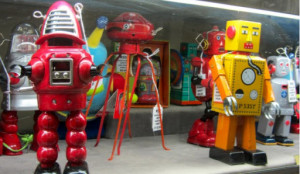
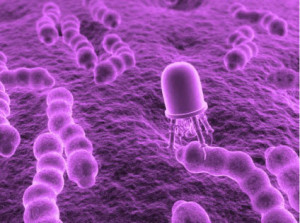
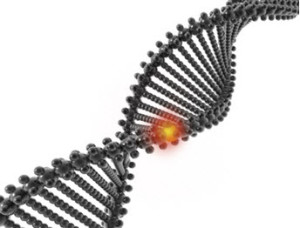
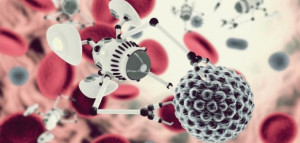
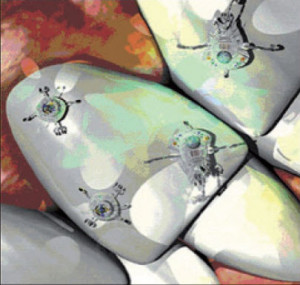





No comments:
Post a Comment